Hydropower dams
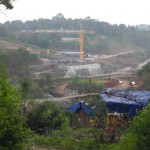
In 2003, a national sector review for hydropower was prepared by the Ministry for Industry, Mines and Energy (now Ministry of Mines and Energy) and the Cambodian National Mekong Committee (CNMC). This report identified 60 possible sites for hydropower development in Cambodia and estimated the lass='cambodia-color'>...
Government
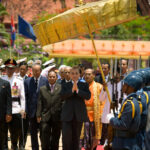
Cambodia is set up as a multi-party democracy under a constitutional monarchy. The King serves as the head of state and the Prime Minister is the head of the Royal Government of Cambodia. Norodom Sihamoni,40 the King, was crowned in 2004 after the abdication of lass='cambodia-color'>...
Environment and natural resources policy and administration
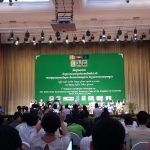
The 7th National Consultation Workshop on the Draft of the Environment and Natural Resource Code of the Kingdom of Cambodia. Photo by Open Development Cambodia, taken on 22 March 2018. licensed under CC BY-SA 4.0.With 76% of its people living in rural areas,64 Cambodia holds lass='cambodia-color'>...
Sustainable Development Goals
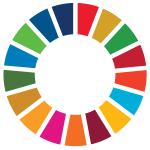
In September 2015, the UN General Assembly adopted the new 2030 Agenda for Sustainable Development. This contained 17 items that have become known as the UN Sustainable Development Goals (SDGs), intended to drive action in critically important areas to the year 2030. These goals have lass='cambodia-color'>...
Primary and secondary education
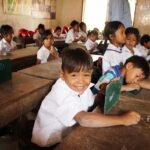
Article 68 of Cambodia’s Constitution states that the Government shall provide free primary and secondary education for all citizens and each individual shall pursue basic education for at least 9 years. Education is a fundamental engine of social and economic development for a country, especially lass='cambodia-color'>...
Coal
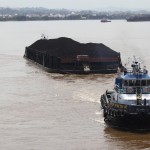
Although exploratory work has indicated the presence of modest coal resources in northern Cambodia, no commercial-scale mining has yet begun. The coal used in electricity generation and for other purposes is imported.A coal barge from Samarinda coal mine on the Mahakam river. Indonesia, Borneo. Photo lass='cambodia-color'>...
Extractive industries
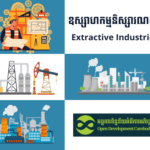
Extractive industries include mining and mineral sectors, natural gas and oil exploration, petroleum refineries, and quarrying for construction resources such as sand, stone, and gravel. Cambodia’s extractive resources have gone largely untapped, while these resources are geographically identifiable. French and Chinese geologists have been indicated lass='cambodia-color'>...
Protected forest
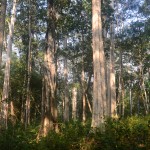
Protected Forests are generally established under individual sub-decrees, specifically for the purpose of protecting biodiversity and conservation. They are home to many endangered or threatened species. lass='cambodia-color'>...
Energy for transport

In Cambodia, petroleum is traditionally the main source of energy for transportation. The petroleum fuels used for transportation include gasoline, diesel, heavy fuel and fuel oil. lass='cambodia-color'>...
Quarrying
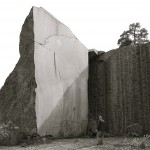
Small-scale quarries producing construction materials are a key part of the mining industry in Cambodia. Clay for brick and tile manufacturing and sand and gravel are found in many locations.Under the law on Mineral Resource Management and Exploitation (‘the mining law’) there are six types lass='cambodia-color'>...
Disasters
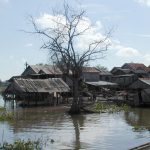
Storms, flooding and drought are the disasters that affect the largest number of people in Cambodia, and they also bring the highest cost. Climate change is likely to make things worse, with drier dry seasons predicted and more rainfall and violent storms in the wet lass='cambodia-color'>...
Population and censuses
table { width: 100%; } table td { vertical-align: middle; } Cambodians gathering along the Chaktomuk riverside in Phnom Penh to watch boat racing during the Water Festival. Photo by Patrik M. loeff, taken on 24 November 2007. licensed under CC BY-NC-ND 2.0.PopulationProvisional results from lass='cambodia-color'>...
Land tenure and land titling

Land registration and titLing of private property has been ongoing for more than a decade. As the Cambodian government works to formaLLy register aLL private property, there is a duaL system of soft possessory rights to be repLaced by hard ownership rights through nationaLLy-recognized titLe. Lass='cambodia-coLor'>...
Biodiversity
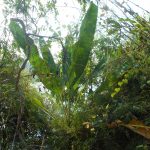
Biodiversity or Biological Resources: Various organisms in the same or different species and living organisms of all levels and sources, including land, marine and freshwater ecosystems, and the ecological relationships in which these ecosystems exist.340 Biodiversity is essential for most of the resources used by lass='cambodia-color'>...
Decentralization and deconcentration
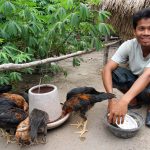
Decentralization and deconcentration are seen as “internally driven” reforms381, where the national government gradually delegates power, involving either administration or finance, to local governments to administer in their locality.27-year-old Sun Sovath supports his family by raising chickens, in Kampong Thom, Cambodia. Photo by World Bank Photo lass='cambodia-color'>...
Adaptation
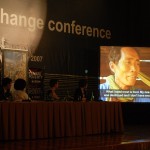
UN’s Bali Climate Change Conference. Photo by Oxfam International, taken on 4 December 2007. licensed under CC BY-NC-ND 2.0Climate change is a continuing problem. In Southeast Asia, Cambodia is one of the countries that is most affected and underprepared. As it is a developing country, lass='cambodia-color'>...
Ministry of Economy and Finance
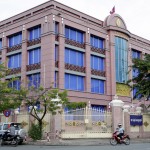
National Bank of Cambodia, Cambodia. Photo by Stephen McGrath, taken on 21 June 2010. licensed under CC BY-NC-ND 2.0 In 1996, the Ministry of Economy and Finance (MEF) was established by law.435 Its organization and functioning is defined by a sub-decree of the Royal Government lass='cambodia-color'>...
System of government
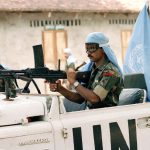
UNTAC soldiers from India patrolling the streets in Prey Veng province, Cambodia, on the second day of voting. Photo by United Nations Transitional Authority of Cambodia (UNTAC), taken on May 24 1993. licensed under CC BY-NC-ND 2.0Cambodia inherited legal and political systems and a state lass='cambodia-color'>...
Plants
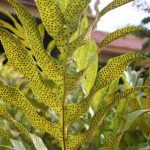
Although there are often new discoveries,471 a global lack of up to date data on botanical research makes plants biodiversity hard to assess in Cambodia. Compared to neighboring countries, the number of plant species is low, mostly due to the relative country’s flat landscape.472 Botanical knowledge lass='cambodia-color'>...
Electricity production
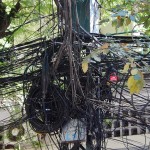
In Cambodia, electricity demands have been forecast to grow at 17.9 percent annually from 2012 to 2020.495 Distribution of electricity around the country has been a challenge: according to UN data, 79 percent of people live in rural areas,496 and the entire national population had grown lass='cambodia-color'>...



